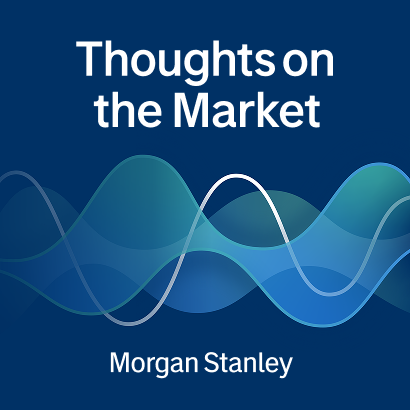Ahead of the November vote, the key variable for investors may rest with divided vs. unified government and its potential impact on policies that can move the economy and markets.
COVID-19 and an uncertain economy have added new dimensions to what may have already been a landmark U.S. election cycle. But the key takeaway for markets and investors is largely straightforward: The overall government election outcome may matter more than any one candidate’s success, and the impact of divided vs. unified government likely is a better predictor of future policies than which party’s candidates come out on top.
To illuminate the election's investment implications, the U.S. Public Policy Research team has updated its outlook from November 2019 to dive into what's at stake for investors across asset classes and equity sectors, detailing how divided vs. unified government could influence tax reform, prescription-drug pricing, the broader regulatory environment and the response to COVID-19.
“We incorporate two new developments since last November—former Vice President Biden as the Democratic party nominee and the societal impact of COVID-19—into our 'plausible policy paths' framework to help investors make sense of the upcoming U.S. election," says Michael Zezas, Morgan Stanley's Head of U.S. Public Policy Research. “Our approach focuses less on gaming out the election and more on the post-election policy path. We think this is more important for investment strategy, both pre- and post-event, as it helps investors avoid mistakes."
One common mistake, according to Zezas: miscalculating the likelihood of a candidate's policy platform becoming successful legislation, given the often bumpy road from campaign promise to enacted law.
The report presents five key takeaways:
1. Policy-outcome uncertainty this cycle is much higher than in past elections. The report offers fairly even odds for Biden and President Trump; although a recession usually weighs on the incumbent, Biden isn’t a shoo-in. Trump and Biden are also viewed as net trusted on different, but crucial, issues, such as the economy, healthcare, COVID-19 response and China policy.
2. Fiscal expansion is a likely side effect of plausible policy paths in either “party sweep" scenario—one party gaining control of the White House, Senate and House of Representatives. However, neither party is considered likely to secure anything beyond a slim majority control of Congress. As a result, the laws that can be enacted are limited to those favored by consensus within the controlling party. In short, legislative power would accrue to moderates, making it tough for either side to enact bold policies.
3. The election will act as a catalyst, influencing the economy, macro markets and key equity sectors. One reason: Voter choices will ultimately dictate what kind of fiscal stimulus “boost" could be used in early 2021 to mitigate COVID-19's economic damage. Biden's more progressive policy platform could bring greater government involvement in healthcare and a climate-change agenda that may significantly affect the macro and equity sector outlooks.
4. Investors may misread the “Blue Wave.” The potential for a unified government outcome, particularly a Democratic one, are higher than in recent cycles, and markets could become more reactive in anticipating a Democratic sweep. Those who see a Biden win as bullish could be disappointed if market rallies in consumer staples and machinery stocks stall on a China policy that could wind up relatively unchanged. On the macro side, a Democratic sweep may result in demand-side stimulus policy, which could have a meaningful multiplier effect for economic growth.
5. Trade tensions could persist between the U.S. and China. The report notes that voter skepticism about China has been rising on a bipartisan basis for many years. Given policymaker actions on both sides of the aisle, the report questions the notion that a Biden win would ultimately bring meaningful change to U.S.-China policy.
Based on these themes and the team’s analysis, here are four possible scenarios and plausible policy pathways:
Divided Government Scenarios
The Thin Red Line (R President, R Senate, D House)
In this status-quo scenario, the recession is short-lived and President Trump benefits, as the economy rebounds from the pandemic. The likely results would include continuing deregulation, which would benefit the telecom and energy sectors, as well as asset managers, though renewables could face pressure. The report expects only minor near-term policy changes and compromised extensions to the expiring 2017 tax bill. U.S. interest rates would likely remain range-bound, or fall further after the election, depending on the path of the recovery. Reactive fiscal expansion is likely, and the dollar could face downward pressure.
Blue Tide (D President, R Senate, D House)
Themes like healthcare and leadership, where Democrats have a trust surplus with voters, dominate the campaign and deliver the election to Biden, whom most voters believe would be better at managing the ongoing crisis, based on current opinions on the pandemic response. Voter demand for change could result in increased regulation and oversight, pressuring certain sectors, such as financials, U.S. energy, telecoms, IT hardware, internet and pharmaceuticals. While early signals of a Biden win could dampen markets before November, after the election of a divided government, U.S. rates markets are unlikely to move dramatically—and may even fall slightly. As with the Thin Red Line scenario, this divided outcome could modestly weaken the dollar.
Unified Government Scenarios
Red Redux (R President, Senate and House)
A V-shaped recovery energizes Republican voters and propels President Trump to a second term and a Republican take-back of the House. Trump adopts a more aggressive, anti-China stance, amid greater U.S. voter wariness of China. A Republican sweep could mean further tax cuts and early extension of Trump's expiring tax provisions, resulting in higher deficits. Such fiscal stimulus would likely boost U.S. GDP and strengthen the dollar, but Treasury bond prices could slip on the growing deficit, pushing up interest rates and yields. In equities, telecoms, U.S. energy and asset managers could benefit from continued deregulation.
Blue Wave (D President, Senate and House)
A prolonged recession could hurt Trump, with historically high unemployment in battleground states that elected him in 2016—particularly Michigan, Pennsylvania and Nevada—undermining his claim to economic stewardship. Voters turn to Biden and the Democrats as more trustworthy on healthcare reform and managing a possible COVID-19 second wave. Such a Democratic sweep could also lead to deficit expansion, driven by healthcare and infrastructure spending. However, the demand-side stimulus would boost economic growth, pushing interest rates and inflation higher. For U.S. equities, managed healthcare organizations, transportation, non-U.S. oil and natural gas, large-cap banks and consumer finance sectors could see gains, but healthcare reform may pressure pharmaceuticals. Increased regulation could also impact the tech sector, financials, net neutrality and environmental issues.
For Morgan Stanley Research on the 2020 presidential election, ask your Morgan Stanley representative or Financial Advisor for the full report, “A Revised Guide to Economic Policy Paths & Market Impacts” (Jun 8, 2020). Plus, more Ideas from Morgan Stanley’s thought leaders.



